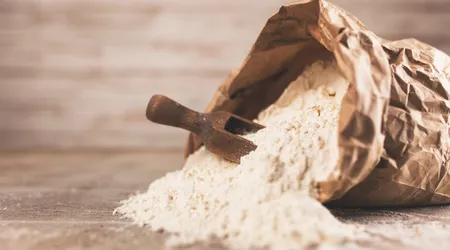Type 00, Manitoba, and Semolina Flour: Which One to Use and When

Which flour to use To make crispy bread, perfect fresh pasta, or a soft cake? Choosing the right flour is crucial in the kitchen.
Announcements
Each type of semolina, 00, or Manitoba, has unique characteristics that influence the final result. In Italy, where culinary tradition is an art, knowing which flour to choose is essential to enhancing flavors and textures.
This article explores the unique characteristics of each flour, with practical advice and information updated to 2025, to guide you in the kitchen with awareness and creativity.
Get ready to discover how to transform your recipes into masterpieces!
Flour isn't just an ingredient: it's the heart of many Italian dishes, from Altamura bread to Neapolitan pizza.
Announcements
The choice depends on the strength, grain size, and origin of the grain. In 2025, the growing focus on sustainability and ancient grains has made the selection process even more complex, yet fascinating.
With this text, we'll guide you through the properties of 00 flour, Manitoba flour, and semolina, with practical examples and a comparison table to help you understand. Are you ready to discover? which flour to use for each dish?
Type 00 Flour: The Queen of Versatility
Type 00 flour is the most refined of soft wheat flours, with a low bran content and a W (strength) index between 90 and 180.
Perfect for soft desserts like cakes and biscuits, it provides a light and crumbly texture. For example, a lemon bundt cake acquires a velvety softness that melts in your mouth.
Despite its versatility, 00 flour isn't ideal for long leavening times. Its weak structure doesn't support complex doughs like panettone.
++ Beer-Dough Pizza: A Masterpiece of Flavor and Innovation
However, it is excellent for fresh egg pasta, such as tagliatelle, where its fineness creates a smooth and silky sheet.
In 2025, organic 00 flour gained popularity, with 30% of Italian consumers preferring local grains, according to a survey by the Agricultural Research Council (CREA).
Choosing a quality 00 means enhancing the territory and obtaining excellent results.

Manitoba Flour: The Strength of Great Leavened Products
Manitoba, a high-protein soft wheat flour (W > 350), is the ideal choice for long-leavened doughs.
Native to Canada, it's rich in gluten, making the dough elastic and capable of retaining gas during fermentation. It's perfect for panettone and highly hydrated pizzas.
Imagine making a pandoro: Manitoba gives that soft, honeycomb structure that makes the dessert unforgettable.
See also: Baked Stuffed Calzone
Mixed with 00 flour, it balances strength and lightness, like an orchestra conductor harmonizing the instruments.
Be careful, though: its high gluten content makes it unsuitable for those with gluten intolerances. By 2025, many Italian companies will be producing Manitoba from local grains, reducing the environmental impact compared to imports.
Semolina Flour: The Rustic Flavor of Durum Wheat
Semolina flour, made from durum wheat, has a grainy texture and a golden color. It's ideal for fresh pasta, such as orecchiette, and rustic bread, such as Altamura bread. Its resistance to baking makes it perfect for industrially produced dried pasta.
Try making Roman-style gnocchi with semolina: their bold flavor and firm texture are unique. Finely ground semolina is excellent for crispy pizzas, with just a few hours' leavening.
Whole-grain semolina, rich in fiber, is increasingly used in 2025 for healthy products, such as whole-wheat bread and pasta, thanks to its nutritional richness and low glycemic index.
Comparing Flours: A Practical Guide
To choose which flour to useIt's crucial to understand their differences. The following table summarizes their main characteristics:
| Flour | Force (W) | Granulometry | Main Uses |
|---|---|---|---|
| 00 | 90-180 | End | Desserts, fresh pasta, béchamel sauce |
| Manitoba | >350 | Average | Large leavened, high-hydration pizzas |
| Semolina | 180-260 | Coarse | Pasta, rustic bread, Roman-style gnocchi |
This table helps you quickly find your way around. For example, for a Neapolitan pizza, you could mix Manitoba and semolina for a balance of elasticity and crunchiness.
Also consider the rising time and the type of preparation. A cake requires lightness, so 00 flour; a homemade bread requires the character of semolina.
When and Why to Choose the Right Flour
Choose which flour to use It's like choosing the right brush for a painting: each type creates a different effect.
Type 00 flour is ideal for delicate preparations, but it doesn't hold up to long leavening times. Manitoba flour excels in large leavened products, while semolina flour lends a rustic flavor and unique texture.
For example, a Genoese focaccia made with 00 flour and a pinch of Manitoba flour will have a crispy crust and a soft interior. Semolina, on the other hand, is perfect for an Altamura bread with a thick, flavorful crust.
By 2025, the trend is toward sustainable and local flours. Italian Manitoba, for example, has a lower environmental impact than imported flour, while maintaining the same properties.
Practical Tips for Use in the Kitchen
Have you ever thought about how which flour to use can change the outcome of a recipe?
For a Margherita pizza, mix 70% 00 flour with 30% Manitoba flour. You'll get a light but well-structured base, ideal for 8-12 hours of rising.
For fresh pasta, use semolina for a bolder flavor or 00 flour for a smoother dough. A tip: sift the 00 flour to eliminate lumps and obtain a smooth dough.
Experiment with blends: a 50% semolina and 50% 00 flour for a rustic yet soft focaccia. Creativity in the kitchen starts with the choice of flour!
The Importance of Sustainability in 2025
Sustainability is a hot topic in 2025. Which flour to use It's not just a question of taste, but also of environmental impact.
Organic and local flours, such as Manitoba flour produced in Italy, reduce emissions compared to imports.
Additionally, ancient grains, such as Senatore Cappelli semolina, are making a comeback. They offer complex flavors and nutritional benefits, such as a higher fiber content.
Choosing certified organic or locally sourced flour supports local producers and guarantees quality. Ask yourself: isn't it better to have bread that reflects tradition and respect for the land?
Frequently Asked Questions
What flour should I use for homemade pizza?
For a homemade pizza, mix 00 flour (70%) and Manitoba flour (30%) for a soft and crispy crust. The semolina adds a rustic touch.
Can I replace 00 flour with semolina in desserts?
Not always. Semolina is grainier and less elastic, but it can be used in rustic desserts, such as semolina cake.
Which flour is healthiest?
Whole wheat semolina is richer in fiber and nutrients than 00 flour, but it depends on the recipe and dietary needs.
Is Manitoba suitable for those with gluten intolerance?
No, Manitoba is high in gluten. For celiacs, opt for rice or corn flours, which are suitable for baking and bread.
What flour should I use for homemade bread?
Re-milled semolina or a blend of type 0 and Manitoba flour is ideal for crispy, well-leavened bread.
This text has been carefully written to offer authentic and practical information, respecting Italian traditions and 2025 trends. Experiment and find your perfect flour.
